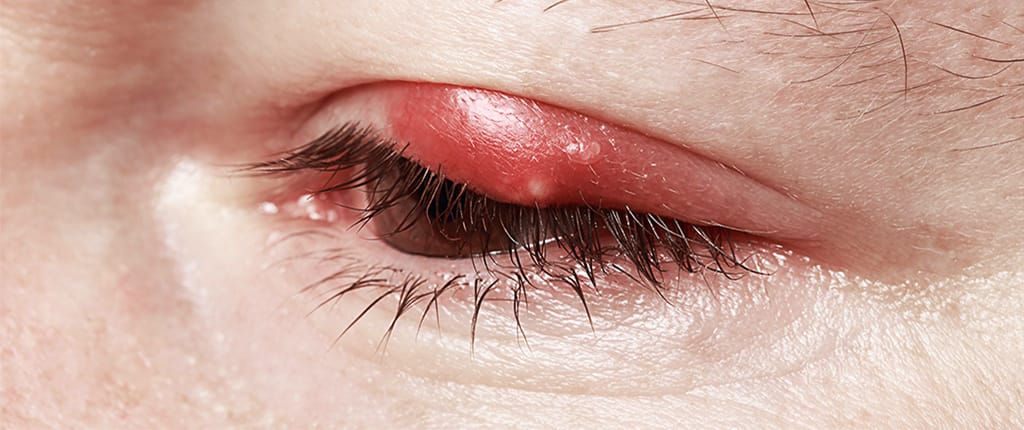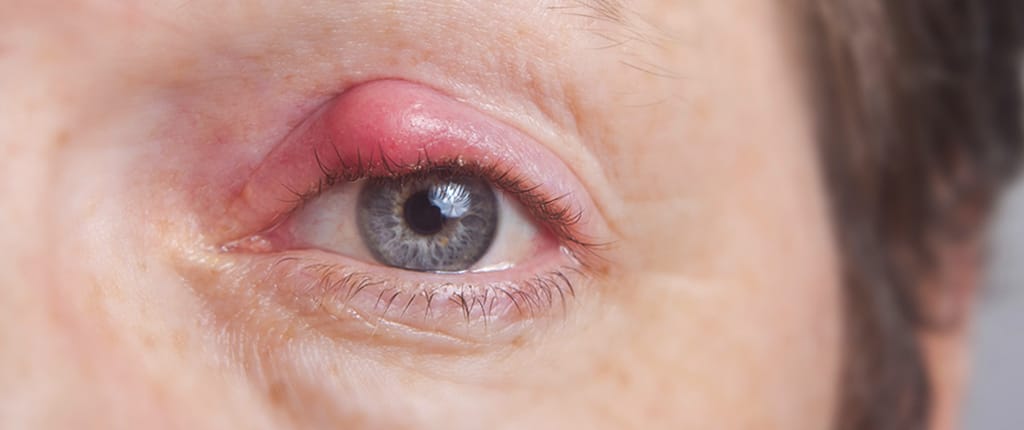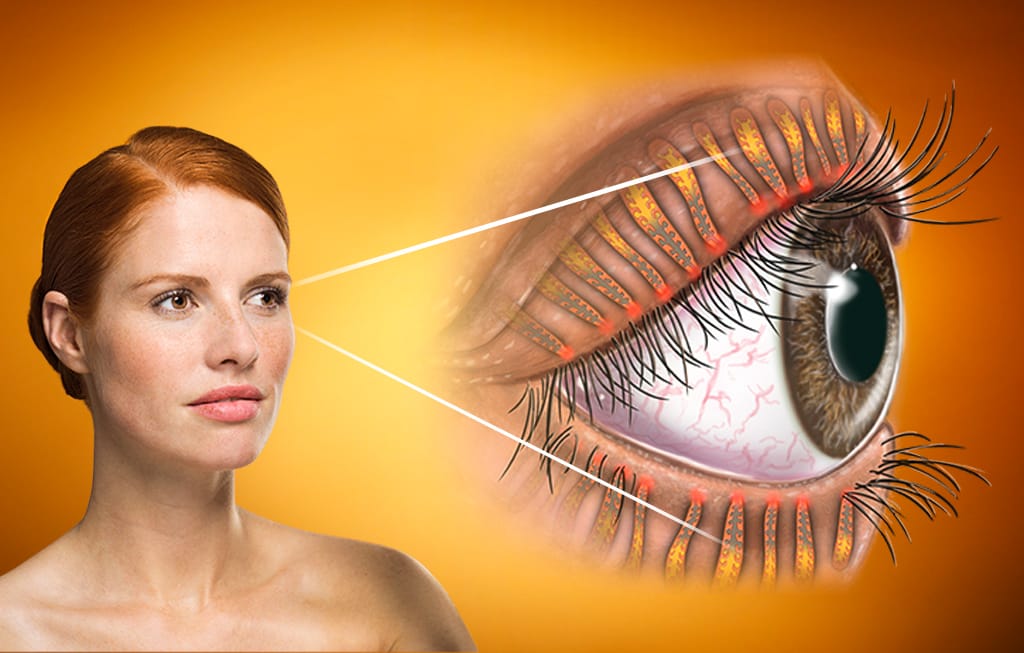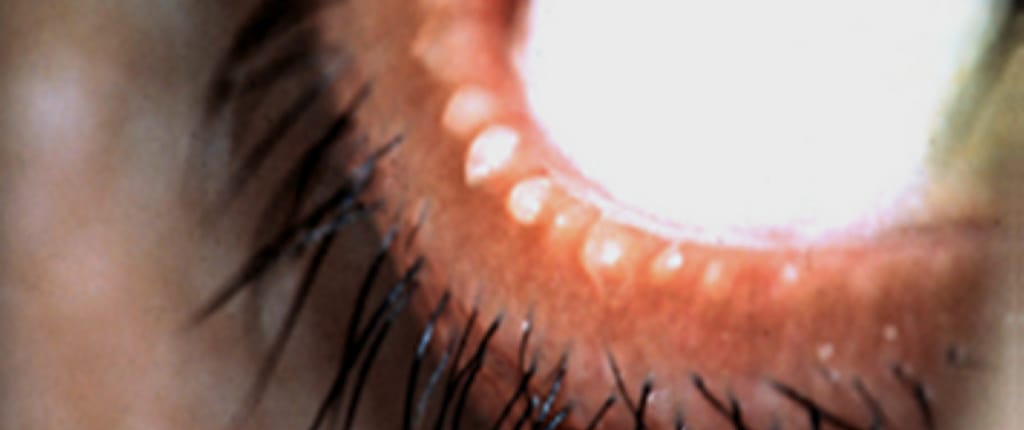Blepharitis: Inflammation of the eyelids
Recognising the symptoms, treating the causes
What is eyelid inflammation?
Eyelid inflammation, known as blepharitis in medical terminology, refers to inflammatory diseases of the edges of the eyelids. It is a commonly occurring condition that takes various forms. In contrast to acute eyelid inflammation, which may occur together with a stye (medical: hordeolum), chronic eyelid inflammation begins slowly and gradually.

Fig. 1: Swollen, red eyelid with stye
Symptoms
In chronic eyelid inflammation, the following symptoms typically develop over time:
- swollen, red, sticky and itchy eyelid edges,
- flaky, sticky eyelashes,
- sore eyes,
- blurred vision and
- sensitivity to light.
The eyes water and feel dry and tired, and the conjunctiva is reddened. The disease generally extends over a period of weeks or months, and treatment with antibiotics or cortisone frequently does not achieve the desired outcome of permanent symptom relief. Daily hygiene and care of the eyelids are seen as the most important treatment measures.

Fig. 2: Upper eyelid with sticky eyelashes (Source: Dr. Thomas Kaercher)
Acute stye:
A stye is an acute inflammation of the glands in the eyelid caused by bacteria. Staphylococci are generally responsible for styes; they cause an accumulation of pus – a so-called abscess.

Fig. 3: Stye
Eyelid inflammation
The Development
The sebaceous glands on the eyelid, also called meibomian glands, open out onto the edges of the eyelid and are an important part of the eye’s protective apparatus:
They produce an oily film that forms a protective layer over the surface of the tear film. The underlying aqueous layer of the tear film is protected from evaporation by the intact oily layer.
If production of the oily film by the meibomian glands is disturbed, the composition of the tear film is not optimal, and irritation of the surface of the eye and the eyelids results. The blood supply to the eyes and eyelids increases and the conjunctiva becomes reddened. Over time, oily deposits build up to form a pus-like, whitish-yellow crust. This is known as meibomian gland dysfunction (MGD), which may accompany eyelid inflammation.
If the dysfunction causes blockage of the sebaceous glands, the secretions accumulate and a meibomian cyst (chalazion) may develop. In the presence of a bacterial infection, a stye (hordeolum) may develop.

Fig. 4: The eyelids as the eye’s protective apparatus
Inflammation of the eyelids
The causes
Factors
Some individuals are prone to oily skin and clogged pores from birth. These innate skin characteristics can be magnified by both internal and external factors and can develop into meibomian gland dysfunction (MGD).

Fig. 5: Eyelid with blocked meibomian glands and dried secretion (Source: Nicholls KK et al. IOVS 2011;52:1917-2085.)
These internal and external factors include:
- Ageing processes
- Hormones
- Skin diseases
- Use of cosmetics and skin care products
- Medications
- Environmental factors (e. g. dust, dryness or wind)
- Smoking
- Air from heating and air conditioning systems
- Nutrition
- Common conditions (e. g. rheumatism, thyroid disease and diabetes)
- Eye diseases
Diagnosis
Diagnosis is generally made by an ophthalmologist. In addition, an appointment with the GP and/or dermatologist may be useful to clarify internal causes.
Meibomian gland dysfunction is usually a long-term condition.
However, it can be well controlled by means of appropriate treatment, so that considerable relief of symptoms can be achieved, or even freedom from symptoms.

